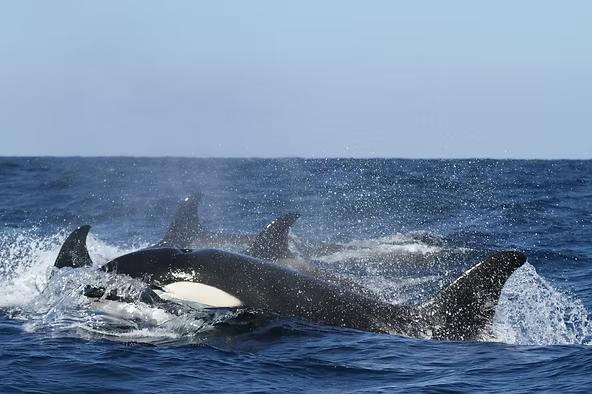Killer Whales Exploit Arctic Sea Ice Decline
The reduction of sea ice in the Arctic Ocean has created new hunting opportunities for killer whales (orcas). These intelligent predators are venturing further north, preying on animals that once relied on ice for protection.
Orcas on the Move
Killer whales are known for their intelligence and adaptability, often targeting prey larger than themselves. With Arctic ice retreating, more orcas are entering these waters each year, creating ecological imbalances in the region.
Tracking the Orcas
Brynn Kimber, a researcher from the Cooperative Institute for Climate, Ocean, and Ecosystem Studies (CICOES), recently presented findings showing increased killer whale activity in the Alaskan Arctic. Underwater microphones placed along northern and western coasts recorded more frequent and longer visits, particularly during periods of reduced summer sea ice.
Prey Vulnerability
Many Arctic species rely on sea ice as a shield against predators. As the ice diminishes, these animals become more exposed, making them easy targets for orcas. A study last fall provided the first evidence of killer whales attacking bowhead whales in the Arctic, highlighting the growing risks for native marine species.
Long-Term Trends
Data from 2012–2019, collected by a Seattle-based research team, indicate that orcas’ extended presence in the Arctic is directly linked to decreasing sea ice. Currently, the sea-ice minimum is declining by about 13% per decade, suggesting that killer whales will continue to exploit these waters more consistently in future summers.
Implications
The increased presence of killer whales in Arctic waters represents a shift in the region’s ecological balance. As open-water seasons lengthen, prey species face heightened predation, and the Arctic ecosystem may see dramatic changes in its predator-prey dynamics.

